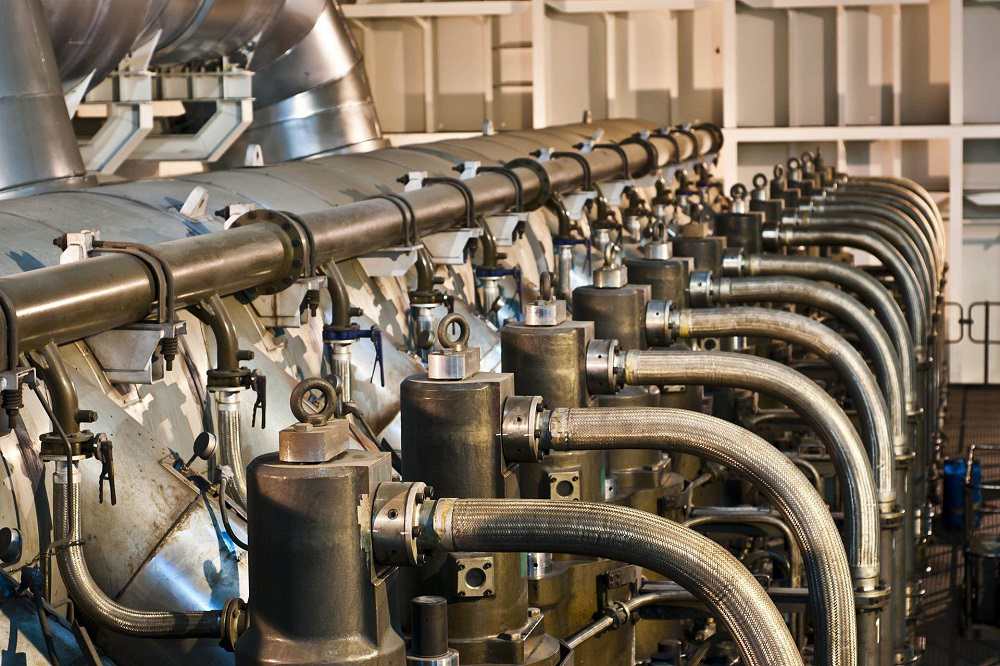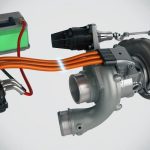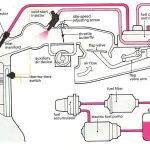In best practice vessels of the 25 metres class (80 tonne) will be fitted with an audible warning device to indicate a dangerous condition associated with: engine lubricating oil pressure; engine jacket cooling water outlet temperature; and engine gear box lubricating oil pressure.
It should be noted that these protection devices give off an audible warning only and do not shut down the engine. Automatically shutting down an engine without any warning could have dangerous consequences and result in collision, grounding, or the loss of the vessel.
The alarm system may have a switch that must be turned on manually to put the system into operation. The danger of this system is the operator may forget to activate the system allowing the engine to run in an unprotected mode. It is preferable that there be no alarm switch. If there is an alarm switch, it is good practice to switch it on before starting the engine. It will sound until the engine is started and the minimum oil pressure registers. Similarly, it should not be switched off until the engine is stopped and the alarm sounds. This procedure also checks that the alarm is operational.
The gear box low lubricating oil pressure alarm operates in the same fashion as the engine low oil pressure alarm.
Low oil pressure alarm
The oil pressure alarm consists of a pressure switch fitted to the pressure side of the lubricating oil system, usually into an oil gallery. The oil pressure acts on a diaphragm and spring which open the contacts in a micro switch. When the spring pressure is greater than the oil pressure, the contacts will close and sound the audible alarm.
If an alarm switch is fitted, switch it on. When the engine is started, the oil pressure switch opens when the oil pressure reaches approximately 69 kPa (10 psi) and the alarm will cease to sound.
Likewise, if the oil pressure drops below the setting of 69 kPa (10 psi), the oil pressure switch will close the circuit and sound the audible alarm. The alarm will continue to sound until the engine is stopped or the alarm switch, if fitted, is switched off.
High temperature fresh water alarm
The high temperature fresh water alarm consists of a thermo switch. It has a bi-metal probe that activates contacts in a micro switch. It is installed in the side of the thermostat housing. When the engine is started and running at normal operating temperature, the contacts in the switch will be open. Should the engine coolant exceed 96° C (+ or – 3°) the water temperature switch will close the electrical circuit and sound the audible alarm and/or indicator light. The gear box low lubricating oil pressure alarm operates in the same fashion as the engine low oil pressure alarm.
A Detroit Diesel engine has an additional sensor fitted for the protection of their engines. In addition, advising the engineer of a slight loss of coolant, non-circulation of the coolant or failure of the sea water cooling action, the alarm will also sound if there is a large loss of coolant. A big and sudden loss in coolant may reduce the coolant level to below the probe in the thermostat housing. As the water is now not circulating over this probe, it will not detect the rise in temperature of the coolant. An additional sensor is fitted into the exhaust manifold outlet to detect the rise in temperature due to overheating. The water temperature switch consists of a temperature-sensing valve and a microswitch. The valve contacts a copper plug (heat probe) which extends into the exhaust manifold outlet. Engine coolant is directed over the power element of the valve and if the water temperature exceed its setting, the valve will close the contacts in the micro-switch thus closing the circuit and sounding the audible alarm. If a loss of coolant occurs, the heat of the exhaust gases will be transmitted through the copper plug to the temperature-sensing valve thus closing the circuit and sounding the audible alarm.
Emergency stop device
Numerous engines are fitted with a manually operated emergency engine shut down device, mounted in the air inlet housing, to stop the engine in the event an abnormal condition arises. If the engine continues to run after the engine throttle is placed in the no fuel position, or if combustible liquids or gases are accidentally introduced into the combustion chamber causing over speeding of the engine, the shutdown device will prevent damage to the engine by cutting off the air supply stopping the engine.
The shutdown device consists of an air shut off valve (flap) mounted in the air inlet housing which is retained in the open position by a latch. A cable assembly is used to remotely trip the latch. The shut off valve must be manually reset on the latch for restarting the engine after the malfunction has been rectified.


